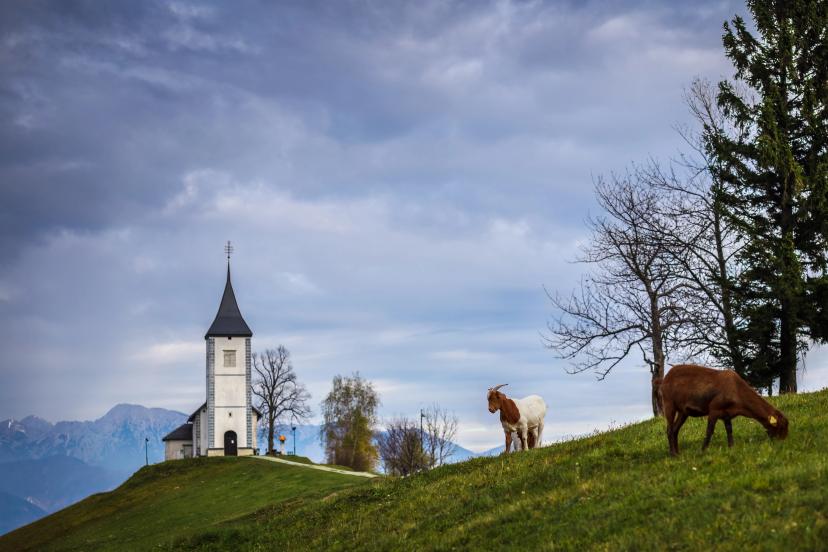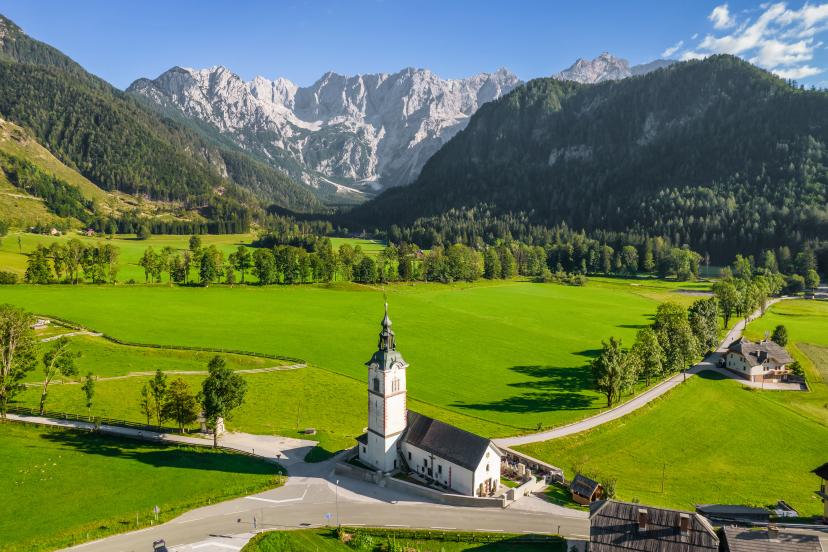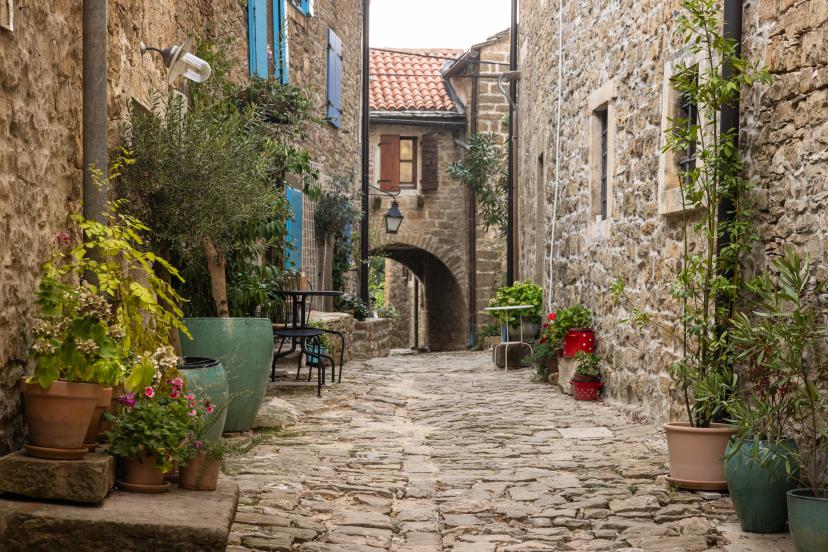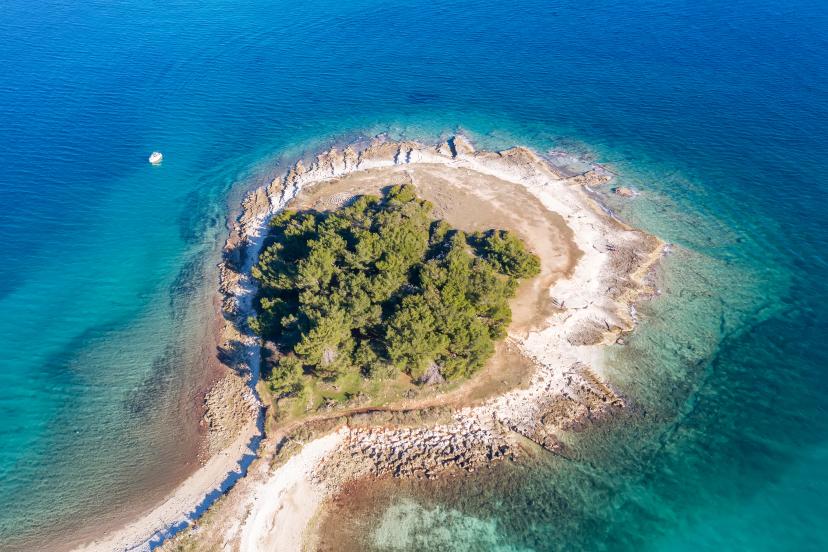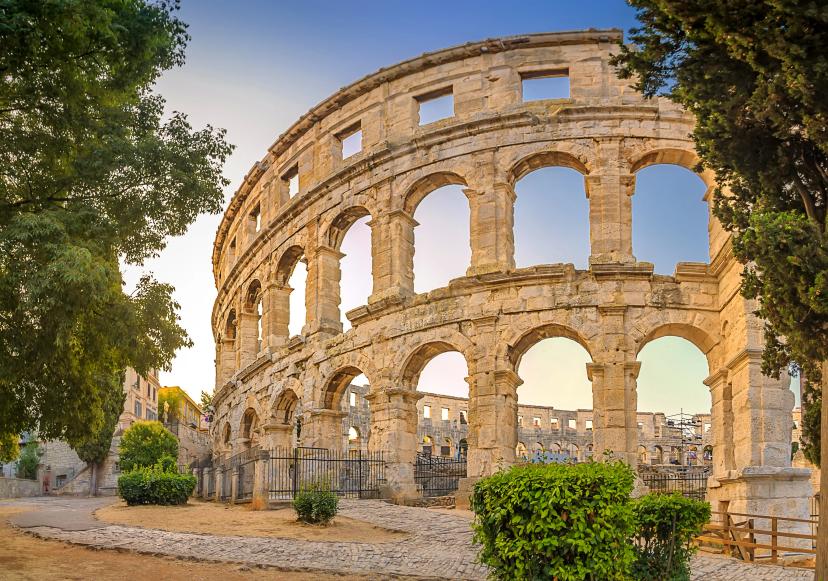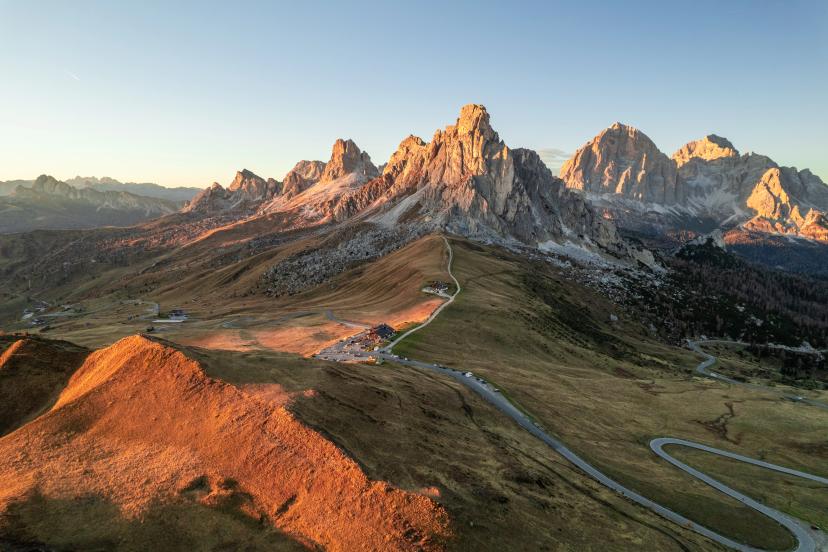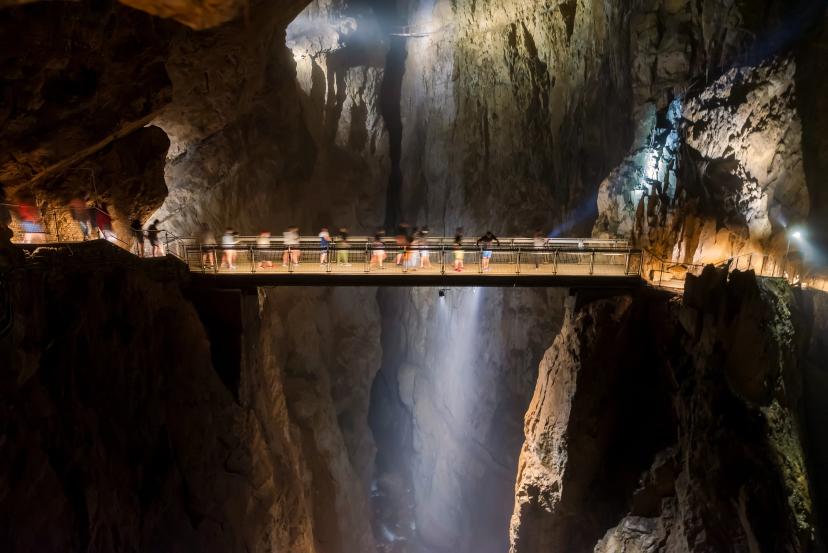Måste-se-platser i Slovenien
Den ultimata sightseeinglistan för Slovenien: nationalparker, vinland, Adriatiska kusten och mer. Upptäck de bästa platserna att se per region.
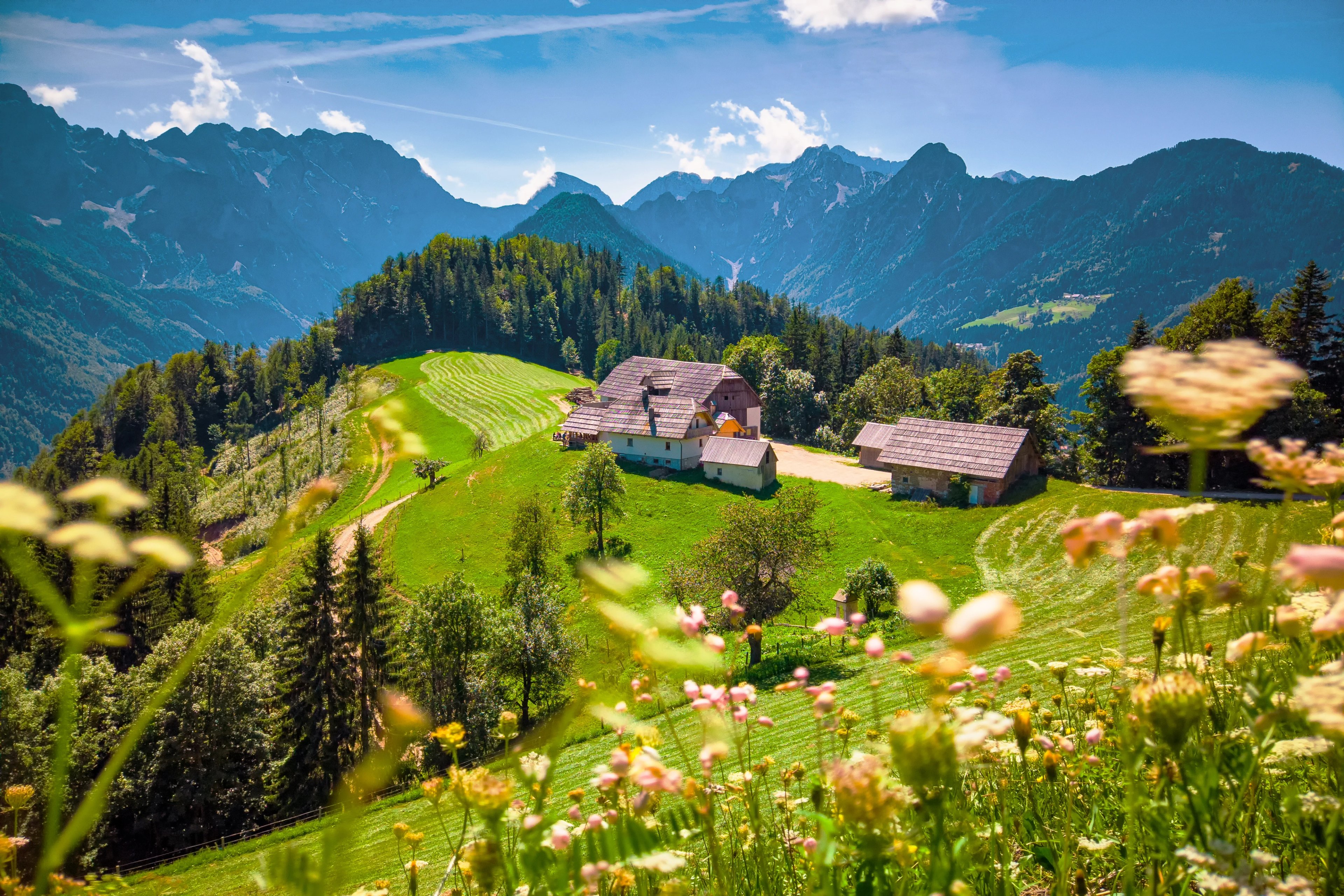
Slovenien må vara litet, men det erbjuder en av Europas mest mångsidiga blandningar av landskap och kulturarv.
I ett och samma land hittar du alptoppar som når nästan 3000 m, smaragdgröna floder, uråldriga skogar, romerska ruiner, venetianska städer och grottor som sträcker sig kilometer under jorden.

Vi har sammanställt en bucketlista för Slovenien med platser att se, indelad efter region. Så, vad bör finnas med?
Alperna & Julian Alperna i Slovenien
I norr avslöjar Slovenien sin dramatiska alpsida. Höga toppar nära 3 000 m, kristallklara sjöar och djupa dalar definierar denna region, där de Julian Alperna och Triglav Nationalpark skapar ett landskap av slående kontraster.
Här hittar cyklister legendariska bergspass, smaragdgröna floder och klassiska alpbyar—en oförglömlig bakgrund för cykelturer genom några av Europas mest hisnande landskap.
Vill du uppleva det på nära håll? Vår Alperna till Adriatiska havet Tour, Sloveniens Champions Ride och Julian Alpernas vägcykelsemester visar allt det bästa av denna spektakulära bergsregion.
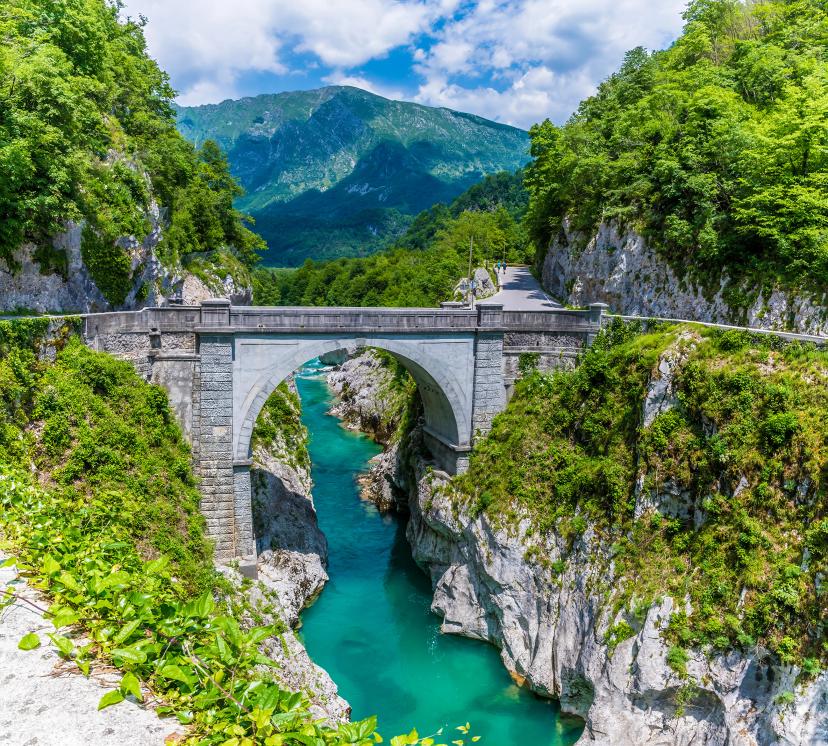
Napoleon’s Bridge
Built in 1750 and named after Napoleon’s troops who crossed it in 1797, this single-arch stone bridge spans about 55 m, rising 22 m above the emerald Soča River. Rebuilt after World War I battles along the Isonzo Front, it remains a striking historic crossing with panoramic views of the Julian Alps.

Lake Bled
Lake Bled is Slovenia’s most famous sight and for good reason. The lake was formed by glacial activity, and in its center sits the only natural island in Slovenia. A church has stood on that island since the 9th century, and today visitors still ring its “wishing bell.” Getting to the island is done the traditional way—by pletna, a wooden boat rowed standing up, a method unique to this area.
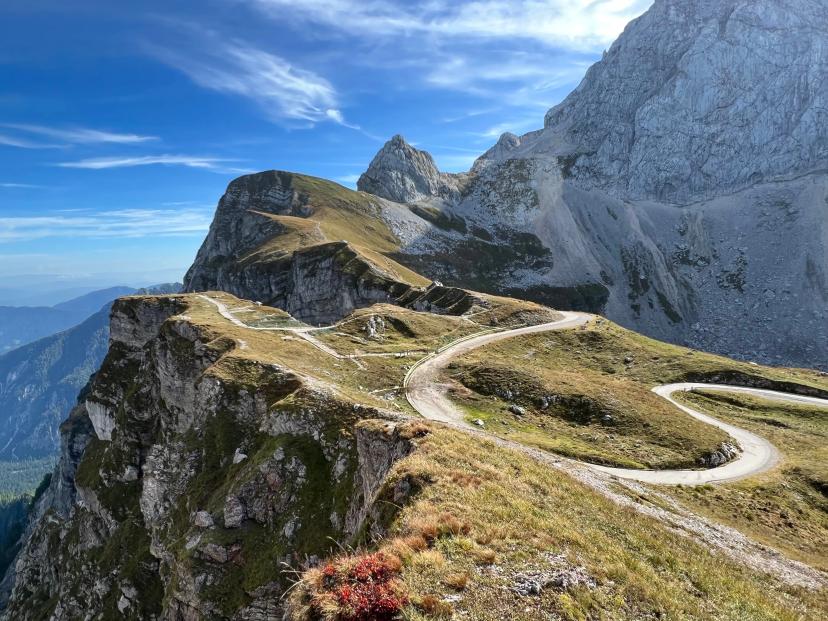
Mangart Saddle
Mangart Saddle, at 2,055 meters, is the highest road in Slovenia. The panoramic road leading up includes tunnels and dramatic switchbacks, ending just below Mount Mangart, Slovenia’s third-highest peak. It is a starting point for hikes, but even without climbing further, the views stretch across Slovenia and into neighboring Italy and Austria.
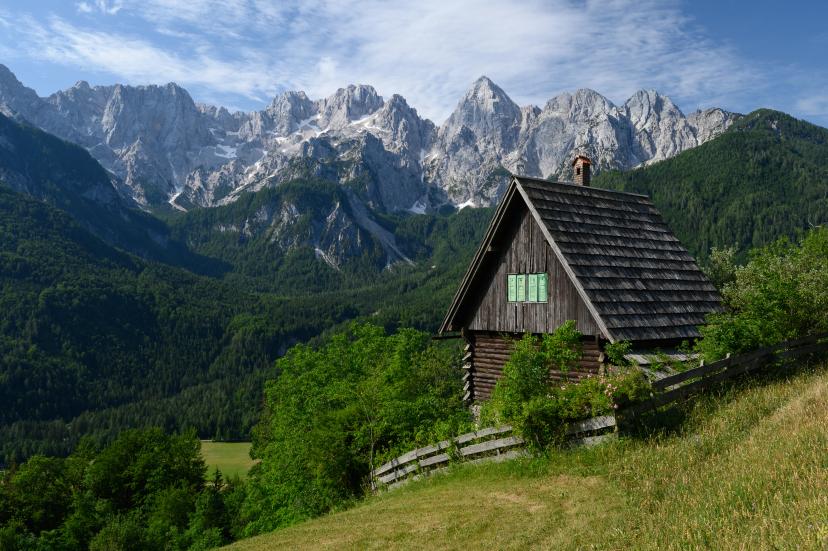
Julian Alps
Crossing north-west Slovenia and into Italy, the Julian Alps rise above 2,700 m and hold icons like the cobbled Vršič Pass with its 24 switchbacks. Glacial lakes Bled and Bohinj, turquoise rivers, and traditional alpine villages create dramatic scenery, while historic WWI routes add intrigue. Cyclists come for challenging ascents, sweeping panoramas, and some of Europe’s most rewarding mountain rides.
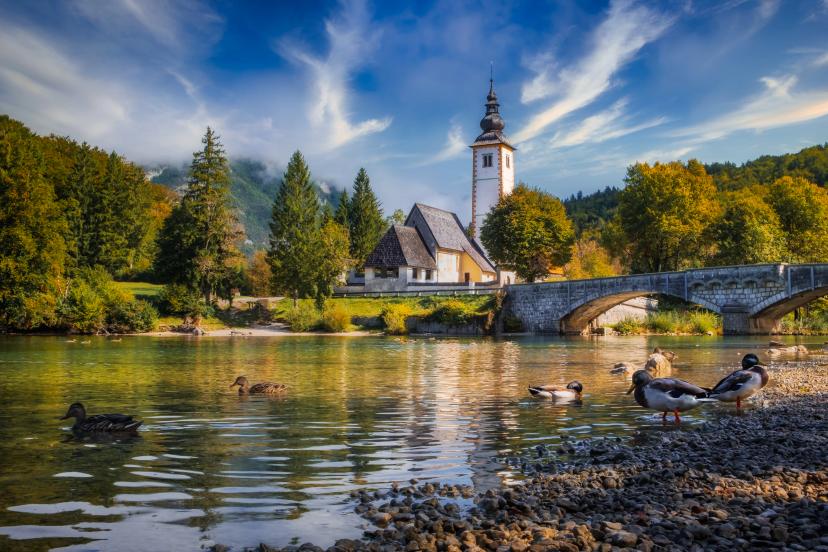
Lake Bohinj
Lake Bohinj is the largest permanent lake in Slovenia, 4.2 kilometers long and 1 kilometer wide, located inside Triglav National Park. It holds about 100 million cubic meters of water, fed by mountain streams and glaciers. Activities such as swimming, kayaking, and hiking around the lake are popular, but it remains much less developed than nearby Bled. A cable car leads from the lake up to Mount Vogel, where ski slopes in winter turn into hiking trails in summer.

Bled Castle
Perched on a cliff 130 m above the emerald waters of Lake Bled, this is Slovenia’s oldest castle, first mentioned in 1011. Its Romanesque walls, medieval courtyards, and Renaissance towers overlook one of Europe’s most photographed lakes, with panoramic views of the Julian Alps and the tiny island church below. Inside, a small museum traces a thousand years of history, while a wine cellar, chapel, and printing workshop bring the past to life.

Zajamniki Alpine Pasture
High above Lake Bohinj on the Pokljuka Plateau, Zajamniki is one of Slovenia’s most picturesque alpine pastures. A ribbon of traditional wooden herdsmen’s huts stretches across a grassy ridge at about 1,300 m, with sweeping views of the Julian Alps and Mount Triglav. In summer, meadows burst with wildflowers and cows graze as they have for centuries, offering a glimpse of authentic mountain life. Reached by quiet forest roads, Zajamniki is a peaceful stop for adventurers seeking classic Alpine scenery.
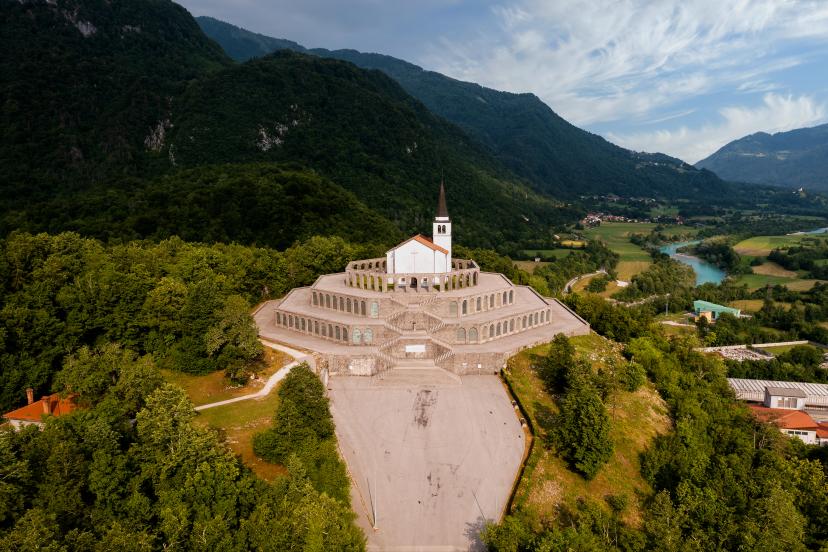
Kobarid Charnel House
The Italian Charnel House in Kobarid is a military ossuary built in 1938 to hold the remains of 7,014 Italian soldiers who died during World War I in the Isonzo Front battles. The circular structure is built around the pre-existing church of St. Anthony, and its inauguration was attended by Mussolini. It stands above the town of Kobarid and is part of the “Walk of Peace” heritage trail, which connects key sites from the front lines of the Great War across the Soča Valley.

Lake Jasna
Lake Jasna consists of two connected artificial lakes near Kranjska Gora. Built for tourism, they are surrounded by walking paths and overlooked by the peaks of the Julian Alps. A wooden viewing tower, a bronze statue of an ibex, and clear alpine water make it one of the most photographed spots in the region.

Dovžanova Soteska
Located near Tržič in northern Slovenia, Dovžanova Soteska is a narrow limestone gorge carved by the Tržič Bistrica River. It is a protected natural monument and internationally known geological site, showcasing 300-million-year-old fossils and rare rock formations from the Paleozoic era. A scenic trail with bridges and interpretive panels follows the river through steep cliffs and natural rock arches, offering visitors both striking alpine views and a glimpse into deep geological history.

Pokljuka Plateau
Rising 1,200–1,500 m within Triglav National Park, Pokljuka is Slovenia’s largest high plateau and a showcase of pristine alpine nature. Vast spruce forests, peat bogs, and open pastures dotted with traditional shepherd huts create a landscape of striking beauty and rich wildlife, with sweeping views of the Julian Alps and Mount Triglav.

Zelenci Nature Reserve
Zelenci is where the Sava Dolinka River begins. The water rises through porous chalk and sand, creating bright emerald pools that never freeze, even in winter. The reserve covers 15 hectares and is home to rare species of plants and animals, including orchids and kingfishers. A wooden boardwalk and viewing tower make the area accessible for visitors, offering views of the surrounding Julian Alps. The constant temperature of the spring water is about 6°C year-round.

Castle Kamen
Above Begunje na Gorenjskem stand the ruins of this 12th-century fortress, once guarding a key trade route through the Draga Valley. Built by the Counts of Ortenburg and later the Lambergs, it was damaged by the 1511 earthquake and uprisings, leaving striking stone walls and towers that now offer panoramic views of the Karawanks and Sava plain.

Soča Valley
The Soča Valley is famous for the emerald color of the Soča River, which flows through deep gorges and past waterfalls. The area is popular for outdoor sports like rafting, kayaking, and hiking, and features an abundance of natural highlights, among others: the Great Soča & Tolmin Gorges, and stunning waterfalls like Virje, Kozjak and Slovenia’s highest - Boka. It is also a site of major World War I battles, remembered through a variety of museums and the Walk of Peace trail.
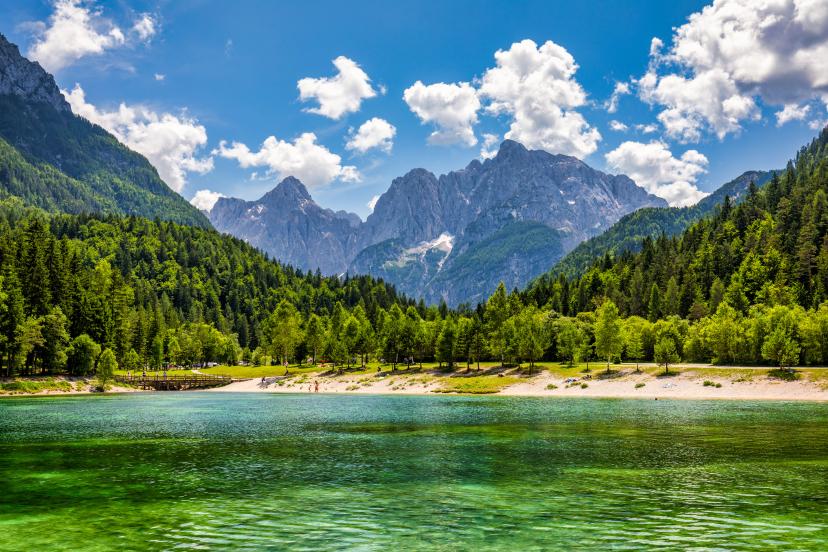
Triglav National Park
Slovenia’s only national park spans 880 km² of the Julian Alps and protects Mount Triglav, the nation’s 2,864 m peak and national symbol. A UNESCO Biosphere Reserve, it’s a landscape of glacial valleys, alpine lakes, and the emerald sources of the Soča and Sava rivers. Quiet roads and scenic climbs lead through Bohinj and the Soča Valley, offering cyclists pristine nature and classic Alpine views.

Matajur
Rising 1,641 m on the border of Slovenia and Italy, Mount Matajur offers sweeping views across the Soča Valley, the Julian Alps, and all the way to the Adriatic Sea on clear days. Its grassy slopes and open summit have long served as alpine pastures, while World War I left historic trails and memorials from the Isonzo Front. Today it’s a beloved cycling and panoramic viewpoint, combining gentle lower roads with a challenging final climb and a unique vantage point over two countries.

Robanov kot
A 5 km glacial valley in the Kamnik–Savinja Alps, Robanov Kot is protected as a Landscape Park and part of Natura 2000. Ringed by peaks like Ojstrica and Krofička, its floor of meadows and forests has been farmed since the 15th century by the historic Roban homestead. Quieter than nearby Logar Valley, it offers pristine alpine scenery, traditional mountain farms, and a peaceful escape into Slovenia’s highlands.
Karst & Medelhavsliknande Slovenien
I sydväst får cykelsemestrar i Slovenien en medelhavston. Karstplatån är känd för sina grottor, underjordiska floder och röda vinodlingar, medan Adriatiska kusten speglar århundraden av venetianskt inflytande. Lägg till soligt väder, terrasserade kullar och historiska städer, och denna region visar upp en helt annan sida av Slovenien. Se regionen under vår signatur cykeltur från Alperna till Adriatiska havet.
Centrala Slovenien
Centrala Slovenien blandar kulturella höjdpunkter med enkel tillgång till naturen. Ljubljana, med sina kaféer vid floden och utsikt över slottet, utgör en perfekt bas för att utforska med cykel. Närliggande medeltida städer, skogklädda platåer och kyrkor på höjderna ger variation, vilket gör denna region idealisk för cykelsemestrar i Slovenien som balanserar urban upptäcktsfärd med landsvägscykling.
Utforska regionen på vår tur Vägcykelsemestrar eller Hidden Hills cykeltur om du föredrar lugna fjällängar och byar.
Karawanks
Karawanks bergskedja sträcker sig 120 kilometer längs gränsen till Österrike och bildar en naturlig gräns mellan Centraleuropa och Balkan. Toppunkter stiger över 2 000 meter, medan alpina dalar, grottor och höga betesmarker formar det dramatiska landskapet.
En gång en bevakad gräns, idag definieras det av traditionellt fårskötsel och utomhusrekreation — och dess långa, tysta vägar gör det till ett av de bästa områdena för cykling i Slovenien.
Klara att utforska det på cykel? Vi har just den tur för dig!
Södra Slovenien
Södra Slovenien domineras av stora skogar, inklusive en av de största uråldriga skogarna i Europa. Kočevski gozd täcker ensam 500 kvadratkilometer och rymmer brunbjörnar, vargar och lodjur. Under kalla kriget var stora områden här stängda militära zoner, vilket bidrog till att bevara dess vildmark.
I dag är det en region där cykelsemester i Slovenien, särskilt för MTB-åkare, får en vildare sida, med vilda stigar genom djupa skogar och en betoning på orörd natur.
Få ditt hjärta att pumpa i de uråldriga skogarna på våra Single Trails MTB Holidays.
Över Gränsen: Italien & Kroatien
Många cykelsemestrar i Slovenien sträcker sig sömlöst in i närliggande Italien och Kroatien, vilket ger ännu mer variation till turen. I Italien kan cyklister ta sig an Dolomiterna, ett UNESCO-världsarv vars legendariska pass har format Giro d’Italia. I Kroatien erbjuder den istriska halvön romersk arv, byar på höjder och truffelrika skogar.
För dem som vill uppleva allt erbjuder vi resor över flera länder som visar det bästa av regionen. Alternativen inkluderar Ultimate Cycling Across Slovenia & Croatia, Legendary Dolomites and Slovenia Road Challenge, och Road Cycling Slovenia, Italien & Kroatien—var och en kombinerar oförglömliga landskap, ikoniska klättringar och de rika kulturerna i tre grannländer.
Planera din cykelsemester i Slovenien
Känner du dig inspirerad av Sloveniens landskap? Bläddra igenom vårt fullständiga utbud av cykelturer i Slovenien eller kontakta oss för att planera din egen tur.
.jpg&w=3840&q=75)

Lokala experter
Våra professionella cykelguider känner till det lokala terrängen och är utbildade för att göra denna unik chans både säker och njutbar.

Problemfri
Vi hanterar resplaner, boende och allt annat du föredrar att inte ta itu med, så att du kan njuta av en bekymmersfri semester.

Helt anpassningsbar
Flexibilitet är vårt mellannamn - oavsett om du vill ha mer eller mindre, eller bara något utöver det vanliga, så får vi det att hända.

Boka med förtroende
Vi är ett finansiellt skyddat företag, helt bundet och försäkrat, vilket håller dina pengar säkra och gör att du kan resa med tillförsikt.

Oöverträffat stöd
Vår 24/7-kundsupport är där vi visar vår passion och ger dig en bättre upplevelse genom att göra ditt välbefinnande till vår främsta prioritet.





